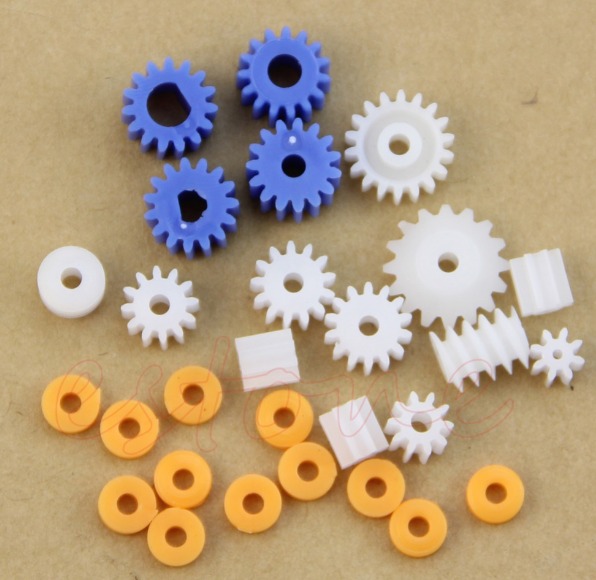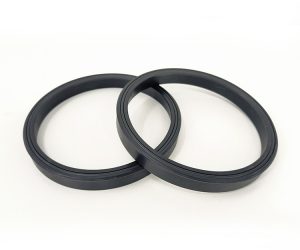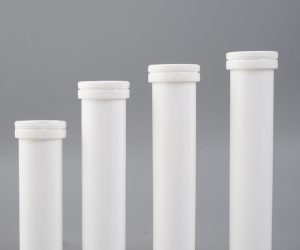Microplastic gears, often overlooked yet profoundly impactful, represent a critical nexus of material science, manufacturing precision, and engineering ingenuity. Their diminutive scale belies a complexity that demands a thorough examination, moving beyond simplistic descriptions to explore the nuanced interplay of material selection, manufacturing processes, and performance characteristics across diverse industrial applications.
The advantages of microplastic gears extend far beyond their compact footprint. Their reduced mass contributes significantly to improved efficiency in high-speed systems, minimizing inertial losses and enhancing responsiveness. The inherent low noise profile, a consequence of both material properties and precise manufacturing tolerances, renders them indispensable in noise-sensitive applications ranging from medical devices to aerospace components. Furthermore, the potential for high torque transmission within their minuscule dimensions opens up possibilities previously constrained by the limitations of larger, metal-based counterparts.
Material selection is paramount. The choice between polyoxymethylene (POM), with its exceptional fatigue resistance, nylon (PA), offering a balance of strength and flexibility, or polycarbonate (PC), prized for its impact strength, is not arbitrary. Each material possesses a unique profile of mechanical properties, chemical resistance, and thermal stability, demanding a rigorous analysis of the specific application demands. The subtle interplay between material selection and the inherent stresses within the gear's geometry dictates its lifespan and operational reliability. Failure to account for these factors can lead to catastrophic consequences, particularly in high-stress environments.
Manufacturing these minuscule components requires mastery of sophisticated techniques. Injection molding, with its capacity for high-volume production and intricate detail, often takes center stage. However, extrusion molding and compression molding offer alternative pathways depending on the desired geometry and production scale. The precision demanded is extraordinary; microscopic deviations from the design specifications can dramatically impact performance and longevity. Stringent quality control, encompassing both in-process monitoring and post-production testing, is essential to ensuring consistent quality and reliability across the entire production run. Statistical process control (SPC) and advanced metrology are indispensable tools in this endeavor.
The operational performance of microplastic gears is not simply a matter of speed and torque. Their behavior under varying loads, temperatures, and environmental conditions demands a comprehensive understanding of tribology – the science of interacting surfaces in relative motion. Friction coefficients, wear rates, and the potential for lubrication breakdown are critical parameters influencing their reliability. Moreover, the susceptibility to fatigue failure under cyclical loading necessitates rigorous testing protocols to ensure operational safety and longevity, particularly in applications demanding continuous operation under high stress.
In conclusion, the world of microplastic gears is far more intricate than a cursory glance might suggest. Their seemingly simple design masks a sophisticated interplay of material science, manufacturing prowess, and performance optimization. A deep understanding of these factors is crucial for harnessing their full potential across diverse industries, driving innovation and advancing the capabilities of countless systems. The future of microplastic gears lies in further refinement of materials, advancements in manufacturing techniques, and a deeper understanding of their tribological behavior under extreme conditions.
The Unseen Architects of Micromechanical Systems: A Deep Dive into Miniature Plastic Gears
Miniature plastic gears, often overlooked yet ubiquitously present, are the silent workhorses driving a vast array of micro- and macroscale systems. Their seemingly insignificant size belies a sophisticated engineering marvel, demanding a nuanced understanding of material science, manufacturing precision, and the intricate interplay of mechanical forces at the micro-level. This exploration delves beyond superficial descriptions, examining the complex interplay of factors that determine the performance and longevity of these critical components.
Beyond Miniaturization: The Mechanics of Microscopic Power Transmission
Miniature plastic gears are not merely scaled-down versions of their larger metallic counterparts. Their functionality hinges on a unique set of properties, demanding a departure from traditional gear design paradigms. The efficient transmission of torque and rotational motion in these diminutive components necessitates meticulous consideration of factors such as gear tooth geometry, material elasticity, and the potential for catastrophic failure under stress. Their applications span across diverse sectors, from the intricate mechanisms of medical implants and microfluidic devices to the increasingly sophisticated functionalities of consumer electronics and automotive systems. The seemingly simple act of rotational power transfer becomes a complex dance of forces at this scale.
A Multifaceted Advantage: Unpacking the Superiority of Plastic Gears in Miniature
The advantages of miniature plastic gears extend far beyond their compact footprint. Their lightweight nature, a crucial factor in portable and mobile applications, is complemented by inherent damping properties that minimize operational noise and vibration. This is particularly crucial in sensitive environments such as medical instrumentation and precision robotics. Furthermore, their inherent corrosion resistance, a significant advantage over metallic counterparts, expands their operational lifespan and reliability in challenging environments. The economic benefits of plastic gears, often overlooked, are substantial, particularly in high-volume manufacturing scenarios where material cost and processing efficiency are paramount.
Material Selection: A Critical Determinant of Performance and Longevity
The choice of plastic material is not a trivial matter; it dictates the performance envelope and operational lifespan of the miniature gear. While common materials such as Polyoxymethylene (POM), Nylon (Polyamide), Acetal, and Polycarbonate offer a range of desirable properties like high strength, wear resistance, and low friction, the selection process demands a deeper understanding of the specific application constraints. Factors such as the anticipated load bearing capacity, the operational temperature range, the lubrication strategy (or lack thereof), and the environmental exposure all play a critical role in material selection. A suboptimal material choice can lead to premature wear, catastrophic failure, and ultimately, system malfunction. The selection process requires a sophisticated understanding of material science and a rigorous analysis of the operational parameters.
Beyond the Material: Manufacturing Precision and Quality Control
The manufacturing process itself is a critical determinant of the final product's performance. The tolerances required for miniature plastic gears are exceptionally tight, demanding advanced manufacturing techniques such as injection molding with highly precise tooling. Quality control measures must be stringent, ensuring dimensional accuracy and surface finish to minimize friction and wear. The slightest deviation from the design specifications can lead to significant performance degradation or catastrophic failure. This necessitates robust quality control protocols throughout the manufacturing process, from material selection to final inspection. The reliability of these miniature components is inextricably linked to the precision and consistency of the manufacturing process.
Miniaturized Plastic Gear Fabrication: A Complex Landscape
5.1. Injection Molding: Beyond the Superficial
The ubiquitous injection molding process, while seemingly straightforward, presents a nuanced challenge in the realm of miniature plastic gear production. The precise control of melt flow dynamics within intricately designed molds – often incorporating micro-features defying conventional tooling limitations – demands sophisticated rheological modeling and advanced process control algorithms. The non-Newtonian behavior of molten polymers, coupled with the inherent complexities of heat transfer within confined geometries, necessitates iterative optimization to achieve consistent dimensional accuracy and surface finish across high-volume production runs. Furthermore, the selection of appropriate injection pressures, melt temperatures, and holding times directly impacts the final gear's mechanical properties, including tensile strength, impact resistance, and fatigue life, parameters critical for reliable operation. The inherent stochastic nature of the process, encompassing variations in material properties and mold filling patterns, necessitates rigorous statistical process control (SPC) methodologies to ensure consistent quality.
5.2. Precision Machining: A Niche for the Exceptional
While injection molding dominates mass production, precision machining techniques, such as micro-milling and ultra-precision turning, carve a niche for applications demanding exceptional accuracy and customizability. These subtractive manufacturing processes, employing advanced CNC systems and specialized tooling, allow for the fabrication of gears with tolerances exceeding those achievable through injection molding. However, the inherent limitations of material removal rates and the susceptibility to tool wear necessitate careful consideration of both material selection and machining parameters. The creation of complex gear geometries, particularly those incorporating intricate undercuts or internal features, presents significant challenges demanding sophisticated CAM programming and advanced tooling strategies. Furthermore, the cost-effectiveness of this approach is inversely proportional to the complexity and batch size, rendering it suitable primarily for low-volume, high-precision applications.
5.3. Gear Design: A Symphony of Parameters
The design of miniature plastic gears transcends the simplistic application of standard gear design principles. The interplay between gear tooth profile (e.g., involute, cycloidal), module, pressure angle, and backlash – already crucial in larger-scale gears – becomes amplified in miniature systems. These parameters directly influence the gear's load-carrying capacity, efficiency, noise generation, and susceptibility to wear. Furthermore, the selection of the plastic material itself significantly impacts the overall performance. Factors such as modulus of elasticity, coefficient of friction, and chemical resistance must be carefully considered in relation to the operational environment. Advanced Finite Element Analysis (FEA) and computational fluid dynamics (CFD) simulations are often employed to predict gear performance and optimize the design for specific applications, mitigating potential failure modes and maximizing operational lifespan.
The Verdict on Plastic Gears: A Qualified Affirmative
The assertion that plastic gears are "good" requires a nuanced interpretation. Their inherent advantages – lightweight construction, corrosion resistance, low cost, and inherent noise damping – render them ideal for numerous applications. However, their suitability hinges critically on material selection, rigorous design considerations, and a thorough understanding of the operational environment. The selection of inappropriate materials or a flawed design can lead to premature failure, compromising the system's reliability. Therefore, the successful implementation of plastic gears demands a holistic approach, integrating material science, mechanical engineering principles, and advanced computational techniques to ensure optimal performance and longevity. The "goodness" of plastic gears is, ultimately, a function of informed engineering choices.
Answering Common Questions
7.1. What plastic is best for gears?
The best plastic material for gears depends on the specific application requirements. Polyoxymethylene (POM), Nylon (Polyamide), Acetal, and Polycarbonate are commonly used materials for gears due to their high strength, wear resistance, low friction, and dimensional stability.
If you want to make small plastic gears, you can follow these steps:
- Trace a gear pattern on a sheet of plasticard with a pencil. You can use a compass and ruler to draw guidelines. You can also find some gear patterns online or use a gear template.
- Cut around the gear with a pair of scissors, leaving some extra plasticard around the pattern. Do not cut the individual gear teeth with the scissors, as this could result in uneven or warped gears.
- Cut the teeth out of the pattern with an X-Acto knife. Start from the corner of a gear tooth and move outward. Follow the pattern exactly and be careful not to cut yourself.
- Sand the teeth of the gears gently with sandpaper to remove any excess plastic and refine the shape. You can wrap the sandpaper around a thin metal bar or ruler to make it easier.
- Clean the gears and match them together to make sure they fit. You can use a pencil or another long cylinder to spin them against each other and check their movement.
You can also watch some videos online that show how to make plastic gears at home with different materials, such as wire case or cardboard.
7.2. How do you make small plastic gears?
Small plastic gears are typically manufactured using injection molding or precision machining techniques. Injection molding involves melting plastic pellets and injecting them into a mold cavity, while precision machining removes excess material from a plastic blank to shape it into the desired gear form.
The best plastic for gears depends on the specific requirements of the gear application, including the load, speed, operating temperature, and environmental conditions. Several plastic materials are commonly used for gears, each offering unique properties that make them suitable for various applications:
- Acetal (Polyoxymethylene or POM): Acetal is a widely used material for gears due to its excellent combination of properties, including high strength, stiffness, low friction coefficient, and good wear resistance. Acetal gears can handle moderate to high loads and speeds, making them suitable for a wide range of applications. They are commonly used in automotive, appliance, and mechanical systems.
- Nylon (Polyamide): Nylon is another popular choice for gears. It offers high tensile strength, toughness, and good resistance to abrasion. Nylon gears have low friction and operate quietly, making them suitable for applications where noise reduction is important. They find applications in industrial machinery, power tools, and consumer products.
- Polyetheretherketone (PEEK): PEEK is a high-performance engineering plastic with exceptional mechanical and thermal properties. It has excellent resistance to wear, high temperatures, and chemicals. PEEK gears are used in demanding applications where high strength, durability, and resistance to harsh environments are required.
- Polyphenylene Sulfide (PPS): PPS is a high-temperature resistant plastic with good mechanical properties and dimensional stability. PPS gears are used in applications with elevated temperatures and harsh operating conditions.
- Polycarbonate (PC): Polycarbonate is known for its impact resistance, transparency, and good dimensional stability. It is often used in applications where gears need to be transparent or have good visibility, such as in optical systems or consumer products.
- UHMW-PE (Ultra-High Molecular Weight Polyethylene): UHMW-PE offers excellent wear resistance, low friction, and high impact strength. It is commonly used for low to moderate load and speed applications, such as in material handling equipment and conveyor systems.
The choice of the best plastic for gears depends on factors such as the load, speed, temperature, environment, noise requirements, and cost considerations of the specific gear system. Engineers and designers need to carefully evaluate the mechanical properties, wear resistance, thermal performance, and cost of the plastic material to ensure optimal gear performance and longevity in the intended application. Proper material selection and gear design are critical to ensure the gears perform effectively and efficiently in their intended use.
Conclusión
Mini plastic gears have totally changed how we think about and make compact mechanical systems. These little gears are light, run quietly, and don’t rust easily, which makes them super useful in lots of different fields like electronics, cars, and medical devices.
To get the most out of these tiny gears, manufacturers need to pick the right kind of plastic material and use smart techniques like injection molding or precision machining. Plus, designing the gears properly is key.
Because they’re so reliable, work well, and save money, mini plastic gears are a great option for many different jobs.
To wrap it up, mini plastic gears really bring their A-game with precision and adaptability. They’re light on your hands, run quietly, By choosing the best materials and manufacturing methods, you can craft top-notch plastic gears tailored to fit any job perfectly.
Miniature Plastic Gears: A Deep Dive into Precision and Unpredictability in Micromechanical Systems
The seemingly innocuous miniature plastic gear represents a nexus of sophisticated engineering, defying expectations within the realm of compact mechanical systems. Far from simple components, these gears are critical enablers of functionality across diverse sectors, from the intricate mechanisms of medical devices to the demanding environments of automotive applications. Their seemingly straightforward design belies a complex interplay of material science, manufacturing precision, and nuanced design considerations that directly impact performance, longevity, and overall system efficacy.
The inherent unpredictability in their application stems from the vast array of operational contexts. While materials like polyoxymethylene (POM), polyamide (Nylon), acetal, and polycarbonate offer a spectrum of mechanical properties – strength, wear resistance, coefficient of friction, and dimensional stability – the optimal selection remains highly context-dependent. Factors such as operating temperature, load bearing capacity, and the presence of aggressive chemicals or solvents introduce a degree of inherent complexity, demanding a rigorous material selection process that goes beyond simple material data sheets.
Manufacturing techniques, too, contribute to the unpredictable nature of these components. While injection molding offers high-volume production and precise dimensional control, its limitations in achieving extremely tight tolerances or complex geometries necessitate the utilization of precision machining for specialized applications. This dichotomy introduces a trade-off between cost-effectiveness and the degree of bespoke customization achievable.
The design itself presents a fertile ground for unpredictable behavior. Tooth profile, module, pressure angle, and backlash are not merely parameters; they are interdependent variables that interact in non-linear ways, influencing gear meshing efficiency, noise generation, and the potential for premature wear. Furthermore, the inherent flexibility of plastic materials, while advantageous in certain contexts, can introduce unexpected deformations under stress, demanding sophisticated finite element analysis (FEA) to predict and mitigate potential failures.
The seemingly simple benefits – lightweight design, low noise operation, and corrosion resistance – mask a deeper reality. The weight reduction, while beneficial for portability and energy consumption, can also impact system stability and necessitate compensatory design considerations. Similarly, the low noise operation, while desirable in many applications, can mask subtle gear meshing irregularities that might otherwise be audible, potentially leading to premature failure if undetected. Corrosion resistance, while generally advantageous, is not absolute and depends heavily on the specific plastic material and the environmental conditions.
In conclusion, miniature plastic gears are far from simple components. Their application necessitates a deep understanding of material science, manufacturing processes, and advanced design principles. The inherent unpredictability in their behavior, stemming from the complex interplay of these factors, underscores the need for rigorous testing, sophisticated modeling, and a holistic design approach to ensure reliable and efficient performance across the diverse range of applications they serve. The future of micromechanical systems hinges not only on the continued miniaturization of these gears but also on a deeper understanding of the complex interplay of factors that govern their behavior.


